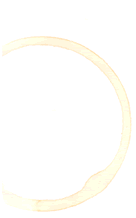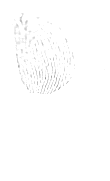"When
we first started going out together, she showed me the poem. In the poem, she recalled his fingers
and the way they had moved around over her face. In the poem, she talked about what
she had felt at the time, about what went through her mind when the blind
man touched her nose and lips. I can remember I didn't think much of the
poem. Of course, I didn't
tell her that. Maybe I just
don't understand poetry. I
admit it's not the first thing I reach for when I pick up something to
read" (Carver 210).
![]() For
years I've been alternately intrigued and frustrated by attitudes which
students and even teachers bring to poetry. Friends and colleagues report various
degrees of misery in their writing or lower-level literature courses,
and considerable hand-wringing, of course, has been devoted over the years
to poetry's reputedly shrinking national audience. Undergraduates in elective courses
and even English majors may write interpretive essays which demonstrate
the requisite analytical thinking and application of important terms,
but their responses often seem strained or mechanical, and they leave
a class as alienated from poetry as ever, or possibly even more so. Students who already love it may
go on to further studies in literature and eventually internalize the
tools and codes enough to apply them credibly and comfortably. But the fact remains that, in spite
of or possibly because of our efforts, the great bulk of college students
are leery of poetry, and remain so for the remainder of their lives.
For
years I've been alternately intrigued and frustrated by attitudes which
students and even teachers bring to poetry. Friends and colleagues report various
degrees of misery in their writing or lower-level literature courses,
and considerable hand-wringing, of course, has been devoted over the years
to poetry's reputedly shrinking national audience. Undergraduates in elective courses
and even English majors may write interpretive essays which demonstrate
the requisite analytical thinking and application of important terms,
but their responses often seem strained or mechanical, and they leave
a class as alienated from poetry as ever, or possibly even more so. Students who already love it may
go on to further studies in literature and eventually internalize the
tools and codes enough to apply them credibly and comfortably. But the fact remains that, in spite
of or possibly because of our efforts, the great bulk of college students
are leery of poetry, and remain so for the remainder of their lives.
The wealth of new media resources, applied in tandem with the ideas of Russian thinker Mikhail Bakhtin, may be of some help. By encouraging hybrid assignments and products, alternative genres and ways of seeing, electronic performance writing can undercut some of the less desirable effects of traditional literary study. And electronic publication may promote valuable and immersive "responses in kind" from students to the poetry they are asked to read.
One caveat: I do not argue in
this essay that electronic writing is a panacea for poetry courses. I
tentatively explore, in fact, ways in which hypertext may actually undermine
the possibilities of poetry-as-utterance in the classroom and what
Bakhtin calls the dialogic creation of meaning. In
this regard, my position on Bakhtin/hypertext is distinct from that of
most theorists, who tend to endorse hypertext via Bakhtin. Despite my
reservations, however, I'll "embrace ambivalence," and argue
at the same time that electronic media can help us reconsider what
poetry is and does in the classroom; that it can offer intriguing ways
to (re)enact the reader-text relationship (Lunenfield xiv).








